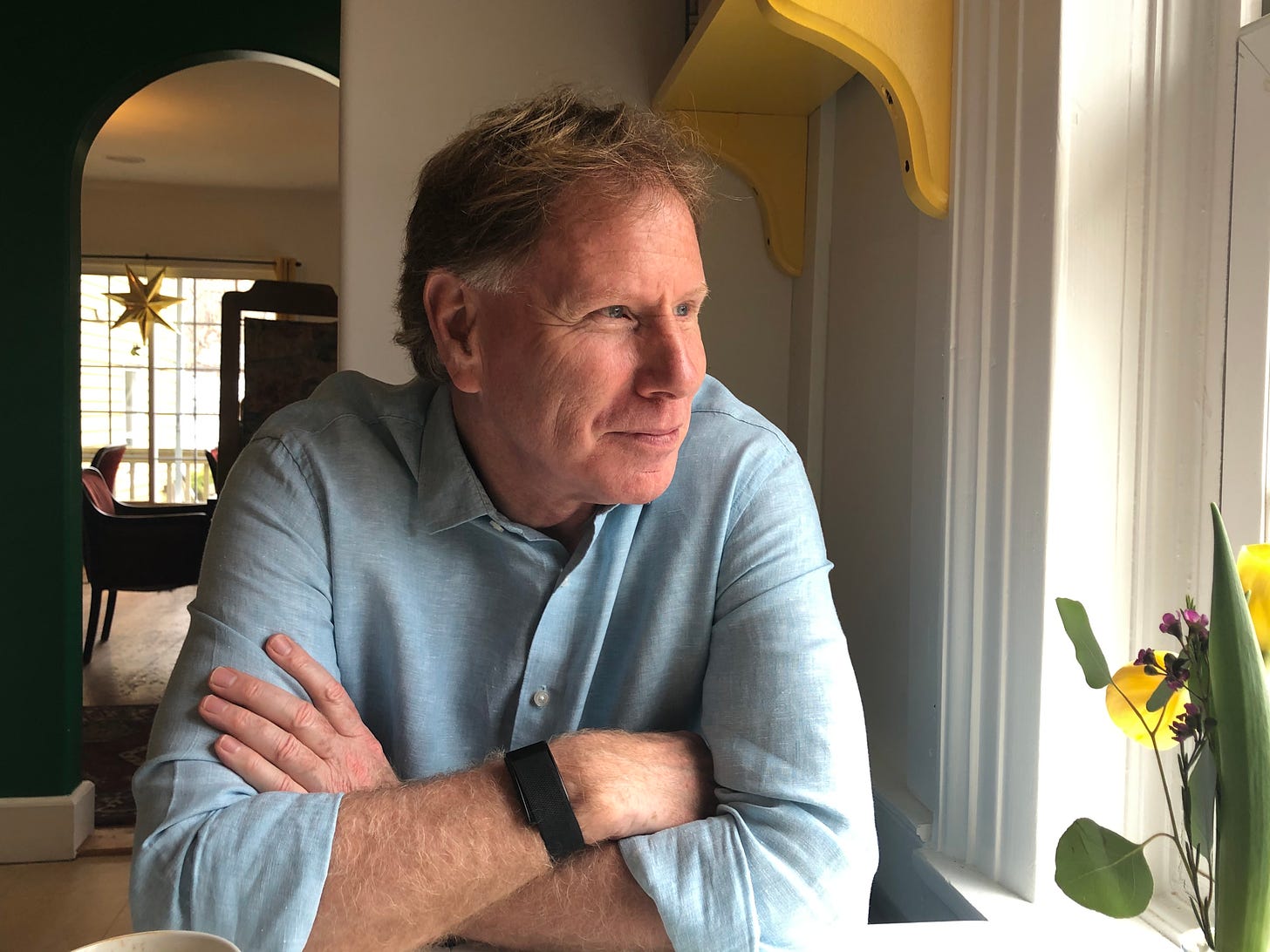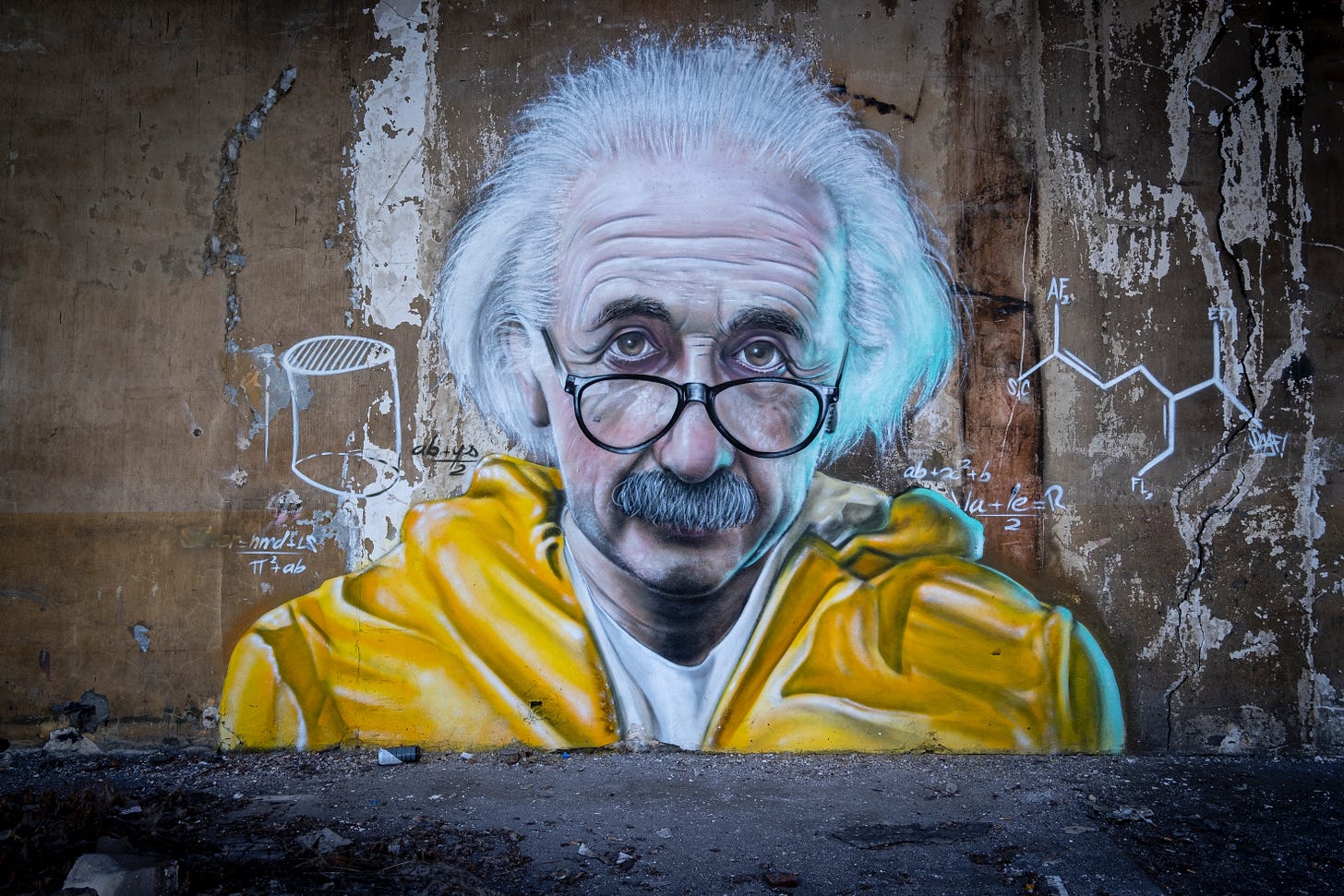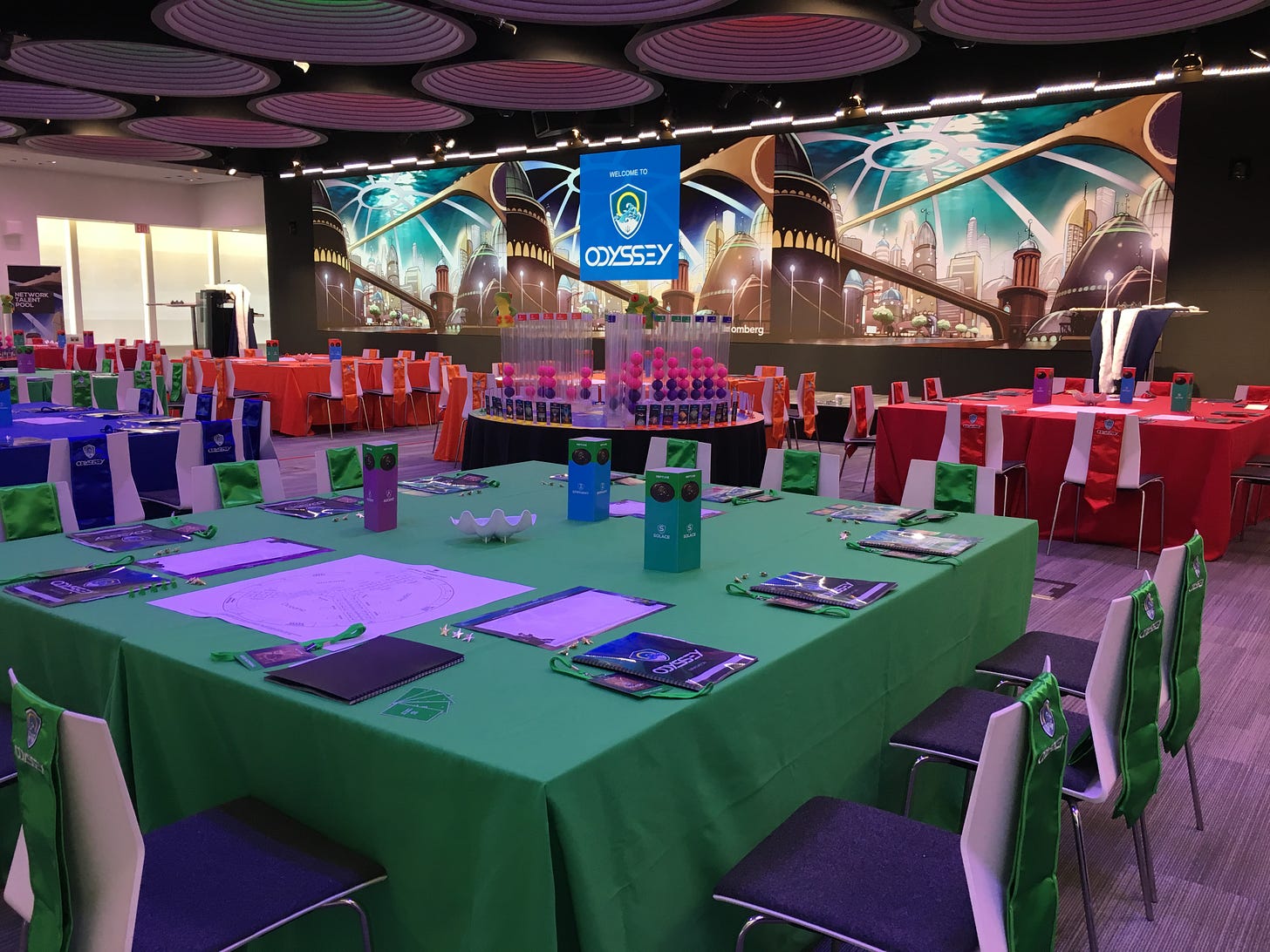Introducing: Don Jones – In Conversation
Exploring the Main & Side Roads of Our Wonderful World of Learning and Development
My take on learning, learners, the design of human experience, the future of immersive simulation, the context of our world, wonder and awe, quantum entanglement theory, and whatever else might interest us together…
Highlights of Inaugural Issue #1
About My Newsletter; The Context of Our Times can be Overwhelming; A Human Revolution Speaking & Immersive Simulation Tour through Bahrain, Oman, Saudi, London and Toronto; Contextual Intelligence; Technical Vs. Adaptive Challenges; Part 1 of An Evolving Manifesto on the Design of Human Experience; and My Dog named Bailey
About My Newsletter, Hello and Welcome,
I am starting this new bi-monthly newsletter on Substack that is designed to add to what I have loved about being in the learning and development field for 34 years, staying In Conversation with you. Very few things have been as important or rewarding to me as the conversations I have had with partners and clients around the world, or strangers that I run into on the beach we live on, many of which have become friends over time. I have learned and laughed a lot with you. I have loved what we have explored, dared to conceive and then and now are creating and delivering as learning partners together. So many wonderful powerful and innovative experiences that we have and will collaborate on together.
Conversations bring out the best in our curiosity and humanity. So, while I might start a newsletter that brings us down one road, I will inevitably take a few unplanned detours that might lead us to discover a hidden cove or dig up a buried treasure, (after all I don’t live far from Oak Island), or find a new way to think about the ground we have already ‘trodden black’, Robert Frost’s described one such well used road in his enduringly beautiful poem, The Road Not Taken.
My greatest hope is that over time you subscribe to Don Jones - In Conversation and share this with others who love learning as much as you and I do, and that you share your thoughts, about the main road we take together and the paths that our interests and curiosities take us on. There’s the real buried treasure.
Don Jones
Where to start with this first missive? How about the context we and our learners find ourselves in …
What a Time We are In. Whew!
Photo by Johannes Plenio on Unsplash
I have always been a Climate Change believer; however, this year has brought that very critical challenge more into the dead center of the imminent and urgent. One day I am getting calls from clients and friends from NY to Norway talking about the smoke from the wildfires in my home in Canada. The very next day, we have more rain in Nova Scotia in one 24-hour period than we normally have in 3 months with deadly consequences, along with 20 hours straight of thunder and lightning so intense that it felt like being inside a horror movie. Then there is A.I. and Large Language Models like ChatGPT. that are disrupting every industry including learning in profound ways, challenging us to think differently about what it is we do and how we do it.
The World Economic Forum says we are in another wave of the Industrial Revolution, but recently I made the case on a five country tour that the principles and models of the Industrial Revolution died a few waves ago. In fact they are now getting in the way of a more human centric approach to productivity improvements and innovation. To me that doesn’t mean we don’t see the massive benefits of the new technology. We are using it now in our Experience it immersive simulations; it’s just that we also see the massively underutilized potential of the ‘old’ technology, humans, and we believe that we need to elevate that focus in increasingly simplified ways. Ironically that simplification has to be in lock step with the growing complexity of the external world. All of this and the political challenges and changes in our world can leave our heads spinning. Nothing in the Industrial Revolution era principles and models prepared us for this, and it requires new thinking. What a time that we and our learners are in. Whew!
Albert Einstein said, “You cannot solve a problem with the same mind that created it.” I would add that you cannot collectively solve a problem within the constraints of the same systems, processes and kinds of relationships that created it. Sometimes the system is the problem..
Photo by Taton Moïse on Unsplash
I don’t say these things to diminish the massive challenges that any of the generations before us have faced and many that they had overcome. I am grateful for the many who have given so much, including their lives, so that my generation and the next have both freedom and opportunity. I also don’t say the above to offer naïve or simple solutions. Though I do believe that together we can and will find solutions.
I am stating it to say that right now there is a lot on our individual and collective minds. And it's not trivial.
My Latest Trip to the Middle East
On my last trip, with about 110 leaders in each location of Oman, Bahrain, and Saudi Arabia, I delivered talks and an immersive simulation focused on A Human Revolution. Then stopover in London and finally a conference speech in Toronto. The people in each of these locations were awesome and so engaged. It was a pleasure. We learn so much from them all (see lessons learned below).Organized by our partner in the Gulf, Dr. Ahmed M Al Banna, the founder of Origin Group.
Before I arrived in the Gulf, I was told that the friendliest people in the world are Omanis. I was skeptical as I already know that our neighbors in the province of Newfoundland are known in Canada as some of the friendliest and nicest people in the world. Then I arrived in Oman. I smiled all the way through customs, to my hotel, in the conference room, out at dinner, and back to the airport the next day, just thrilled to find the Omanis level of consistent ‘niceness’ exceeded even the comments I was given before I arrived. (If the government of Oman is listening, I think you might consider ‘twinning’ with our wonderful neighbors in Newfoundland and form an international coalition of Super Nice People, not aggravatingly nice, but super nice. Sign me up if you have a conference in either location.)
One of the reasons I love travel is to constantly be reminded that no matter where we travel, around Canada or North America, Europe or the Middle East there are beautiful people that only want what we all want, a chance to be seen, to be heard, to create a good life for themselves and their families, and to share that life with those that they most care about. I love travel and am so grateful to my profession for helping me see the world and meet so many good, kind, generous, and brilliant people.
Lessons We Learn from Our Simulations
What have my team and I learned from observing 250,000+ smart leaders in over 78 countries and 90 universities over 34 years as we witness them struggle, fail and usually triumph inside these complex simulated worlds they have willingly, (thank you!) put themselves through.
We learned a lot from what they said to us, but even more by what they did.
My photo of Experience It’s Odyssey simulation
PATTERNS OF BEHAVIOR
The three biggest patterns that have emerged were the traps that these leaders fall into. They are very similar across geographies, cultures and hierarchies. I will return to these in many of our future DJIC newsletters, from different angles and perspectives:
Many leaders:
Are to varying degrees, ‘context blind’ in a complex interconnected world that requires more, not less context understanding and consideration in order to lead successfully. This is by far the greatest lesson we have learned and the biggest challenge or trap that very smart leaders consistently fallen into.
Forget that leadership, is by definition leading change, period. If you are not moving the team from A to B, then you may be managing well but you are not leading. Leaders don’t have to love change, but they do have to successfully lead change, which first means seeing how the world they fit into is changing. (Does this remind you of number one?)
They consistently overestimate the advantage of technological improvements and underestimate the potential of leveraging humans in the technological change process. And to a great extent their technological improvements fail not because of the technology, but because of the way that people were not properly engaged in the process itself. Here is a link if you want to read another White Paper: Why Digital Transformation Must Be Designed and Owned by the Middle
So let me try to tie together three things: the opening theme of the challenges in our world today, the patterns and the biggest traps that we see executives fall into, and one of the topics on my agenda on this tour. One common thread is the differences between Technical and Adaptive Challenges. Not my original thinking. The best lessons on this, in my opinion, still come from the well-known work by Ronald A. Heifetz & Donald L. Laurie in The Work of Leadership. Which I write about, from a different perspective, Contextual Intelligence, in a white paper we will publish soon on our website under Thought Leadership. A technical challenge is one that you have faced before and that you have overcome using a proven, tested and known problem-solving process. An Adaptive challenge is one that you have never faced before, and that your tested and proven problem-solving process will not work for. The biggest misstep is when leaders mistake an Adaptive problem for a Technical one. The problem with that is that the leader will begin to work on a solution with an inadequate frame, use a less than optimal problem-solving process “It worked so well before?” and will work diligently but tread water, or worse sink or fall farther below the surface.
Collectively our organizations and our leaders are facing more Adaptive Challenges then they have ever faced before. We need to fundamentally change the way we approach solving them. Leaders need to avoid the biggest traps they consistently fall into (see above): Seeing, Understanding, and Shaping Context. They need to change the frame of the tools they bring and open the paths for leaders to reach across silos. They need to realize that it’s a requirement that those interactions become more than transactional. Leaders in the middle actually need to get to know other leaders professionally and personally. What a radical idea, eh? * Do I have to say why the research shows that this is so powerful for humans and organizations populated by them? It might surprise some. The brilliant Barry Oshry dedicated his lifetime of work to these ideas. One of his many powerful books, my favorite, is Seeing Systems, shows this and more. I really don’t think there is a better person on the planet on this topic. I have been fortunate to spend a bit of time with and learn from Barry Oshry. Leaders also need to better align themselves and their team to a mission, elevating discipline and purpose over control and compliance, simplifying systems in direct inverse relationship to the complexity of the world around them. (More on this in future In Conversations when I examine the evolution of organizational design from an historical perspective. Hint: It’s the arc of the story that’s most telling.)
We simply cannot rely on the individual heroic, silo/functional or even organizational-centric solutions of the past to solve the the increasing Adaptive Problems of today’s much more interconnected and complex world. We need to frame the problems differently, help our leaders lead with deeper contextual intelligence and with their whole humanity, including, and this challenges the Industrial Revolution’s way of defining human contribution, leveraging both sides of their brain and the rest of their body as well. The solutions to deeply interconnected problems require stronger ties between individuals in our team, between teams, and to our customers, partners, suppliers, to the communities we work within and serve, and yes to the planet itself. Those ties and and those connective lines are in fact the new powerful connective tissues and neural networks of the living organization that ‘get stuff done’, versus the hierarchical boxes that defined the machine-like power base of the past. (Still my favorite book on getting things done is not surprisingly David Allen’s Getting Things Done
Note 1 of 34 from An Evolving Manifesto On the Design of Human Experience
Additional nodes will be added to each newsletter or click above if you can’t bear to wait. 😊
Where do we start in the design of learning experience? Most people start from learning outcomes. We start from an emotional connection to the learning outcome; not only what the benefit is to the organization of this change, but also why the participants would care about this. We have to reach and challenge them intellectually, but also fully engage them emotionally. The story emerges in pulsing, living form, from the heart of the problem; it doesn’t descend coolly from the head.
A Picture Is Worth a Whole Lot of Words
A picture or some other trivial thing (this is not directed at you, Bailey) will be added to each newsletter with a really clever title (?) just for the fun of it.
It's a Dog’s Life (If we’re lucky that is)
I will frequently be writing this newsletter in my office from my home in Nova Scotia. Today my 15-month-old half-poodle, half-sheepdog is threatening to herd me. She looked over at me as I took her picture and said, “Don’t blame me for the typos and grammar, you’re on your own, buddy. I created the first draft for you and that’s enough.”
And thank you for being In Conversation with me! Have a great day.
Don
P.S. Please subscribe to my Substack newsletter. It’s free and Bailey doesn’t bite (too hard), and I don’t send you advertisements or share your emails (ever.) Send this link to your friends that, like you and I, love learning and development. Best of all add your comments to the community and do what I love best, be In Conversation with me and an eclectic and endlessly fascinating group of wonderful others.
Don Jones is the Founder and Chief Designer of Experience It Inc. and Experience It Learning Studios Ltd.
He is an author of non-fiction and fiction books. He prefers fiction. Don is an avid reader who turns to non-fiction when he is looking for facts, and fiction when he is searching for truth. He is a speaker, passionate ex-university basketball player and a current struggling tennis player. He lives on a lovely beach in Nova Scotia, Canada with his wife Akemi and his dog, and reluctant grammar editor, Bailey. Don is always open to a conversation …
+1 416 970-6107 • don@experienceit.com • www.experienceit.com










